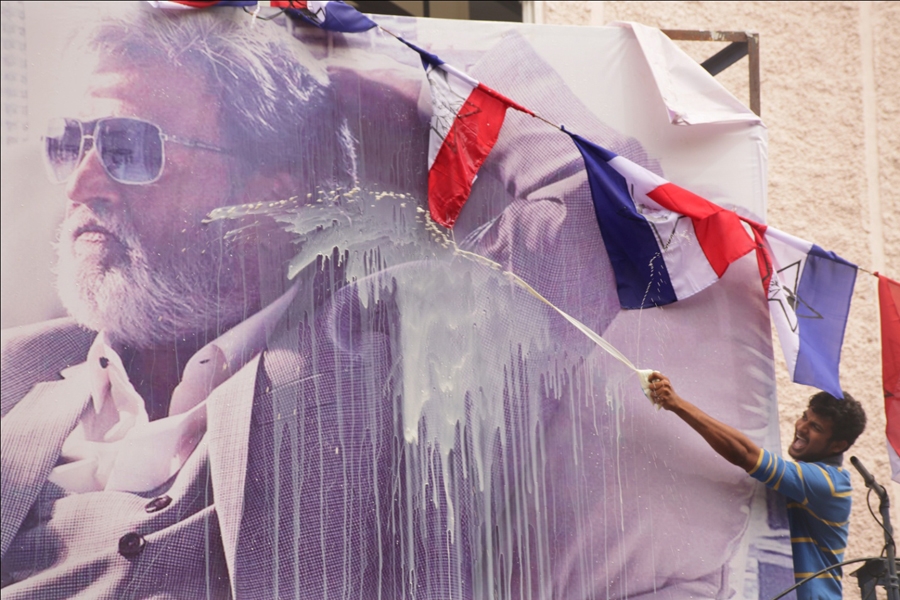A lewdly morphed image of a twenty-one-year-old girl called Vinupriya appeared on Facebook. Her father ran from pillar to post to complain to the police. He was forced to offer a smartphone as a bribe to a constable, who upon receipt of the gratification assured him that necessary action would be taken to undo the damage. The police assured him that they had written to Facebook’s head office and the picture would be taken down. Unable to live down the ignominy, Vinupriya committed suicide.
A thirty-five-year-old man killed his partner, a thirty-eight-year-old woman, and her three daughters (from her previous marriage), aged nineteen, eighteen and sixteen. He lived with the corpses for four days until his landlord complained to the police about the smell of putrefaction. He confessed that he wanted to marry the elder daughter; when his partner opposed the proposal, he killed all four women.
Twenty-four-year-old Swathi was murdered in broad daylight in the heart of the city – the Nungambakkam railway station. No one even bothered to cover the body for nearly two hours. Ramkumar, the accused, confessed, stating that she had failed to respond positively to his amorous advances. Ramkumar seems to be influenced by mainstream Tamil movies. Tamil films often glorify, nay legitimise, unemployed wastrels who, taking a fancy for educated young women from politer sections of society, by hook, crook and the brute force that a true-blooded Tamil male must possess, achieve the ultimate goal of marital union.
More recently, a young man shot a video of himself throwing a three-month-old dog from a terrace, and circulated it on social media platforms. It emerged that the young man and his friends who helped film the grisly act were medical students. They were arrested but released on bail of Rs 5,000 (roughly £60). If proven guilty, they could get away with a fine as little as Rs 50 (about 50 pence). A seat in a private medical school costs nearly Rs 10 million.
Each of these events sounds like it could make its way to the year-end list of horribly perverted acts in an Indian magazine or newspaper. However, all of them – and there are hundreds more, I assure you – took place in Tamil Nadu over the course of seven days. Yes, you read that right.

Flyposter for film star Rajinikanth’s Kabali (2016). Photo: Prabhu Kalidas
The situation in the rest of India is hardly any different. The gang rape and murder of a young student called Jyoti Singh by five men (some of them not yet eighteen) in 2012 in Delhi became a lightning-rod issue. There were massive nationwide protests and spontaneous outrage on a scale not seen in India before. Hundreds of such atrocities against women have taken place since.
In India, it is now acceptable to invade anyone’s privacy unchecked. Especially a woman’s: you can stalk her, bully her, kill her in broad daylight without any fear.
A friend, while flying down from Delhi to Chennai, unfortunately ran out of cash. He had multiple credit cards and debit cards backed by a comfortable bank balance. He was hungry and wanted to grab a bite to eat on the plane. Sorry, they won’t serve you even a cup of coffee if you can’t pay in currency notes carrying the Mahatma’s picture.
U.V. Swaminathan Iyer, a man billed the ‘grandfather of Tamil’ for his efforts to preserve classical Tamil literature, recounts an incident in his memoirs. At around ten o’clock one night, his wife asked him if she could pour water in the leftover rice (the ritual that marks the closure of kitchen for the day). Swaminathan replied: ‘The last train to the city seems to be running late. Let’s wait a little longer.’ Those arriving by the last train would most certainly find eateries closed. Anyone hungry could turn up at the Swaminathan household for a meal. The standard practice at their home was to close the kitchen some 30 minutes after the last train had arrived. Till a few decades ago, it was common for houses in Tamil Nadu to have something known as thinnai, a small elevated structure abutting the outer wall right next to the entrance. In part, the thinnais were built so that passersby could spend a night under the thatched or tiled shade. It was common practice for the owners of the house to offer such complete strangers food and refreshments.
One hundred years ago, this was the way of the Indian life.
Adi Shankara, arguably the greatest Indian philosopher and theologian, in his eighth-century Sanskrit composition Bhaja Govindam, wrote that knowledge without wisdom is useless tinsel.
In the last quarter-century, India has witnessed an unprecedented technology boom. In a society that has recently discovered the pleasures of mindless conspicuous consumption, and where material advancement is the sole driving force of life, there is now a spiritual vacuum being filled by matinee idols (see pictures).
Increasing prosperity is making young Indians behave like tiny tots in a candy shop. Technology in their hands is like the proverbial string of flowers in the possession of a monkey.
This article was first published in the Autumn 2016 issue of ArtReview Asia.
